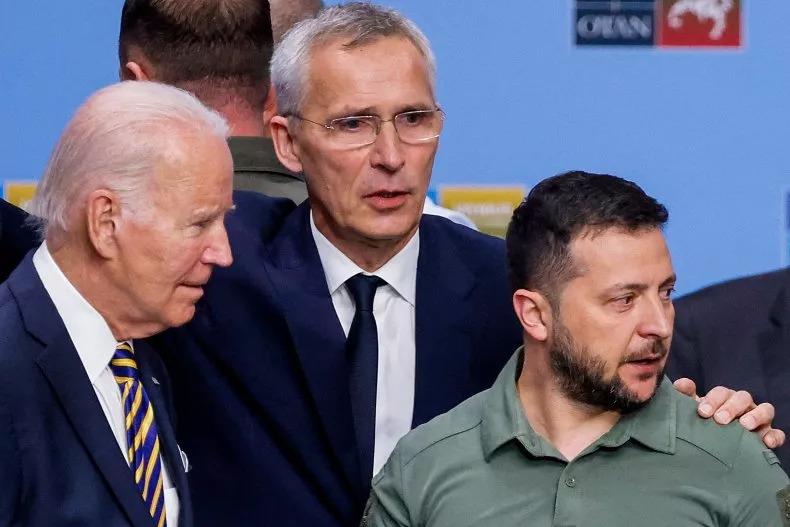What to define the agenda at the upcoming NATO summit?
In a pivotal moment, just days following American Independence Day festivities, heads of state, diplomats, and dignitaries will converge on the hot and humid environs of Washington, D.C., to mark NATO's 75th anniversary.
As highlighted by Newsweek, this milestone gathering will reflect on NATO's enduring legacy as the world's oldest and most successful military alliance, pivotal in shaping Western Europe's post-World War II security architecture and maintaining stability amid the Cold War era.
This celebration is not merely ceremonial; it resembles a familial gathering at grandma's, filled with reminiscences about NATO's historic role in thwarting Soviet dominance over Western Europe and its enduring relevance today, amid the ongoing conflict in Ukraine.
Undoubtedly, Ukraine's war will dominate discussions at this two-day summit. This conflict has defined Europe's security landscape for over two years, underscoring NATO's critical role in the region. However, tensions may arise anew between NATO members and Ukrainian leaders weary of repeated assurances regarding potential NATO membership.
The last NATO summit saw discord over this very issue. Ukrainian President Volodymyr Zelenskyy, known for his diplomatic acumen, expressed frustration over NATO's failure to reach a consensus on Ukraine's accession. The Vilnius Summit Communiqué, while affirming Ukraine's future in NATO, fell short of Zelenskyy's expectations, prompting him to criticize what he saw as insufficient commitments.
American and British officials, in response, expressed some frustration with Zelenskyy's remarks. U.S. National Security Adviser Jake Sullivan hinted at ingratitude, referencing substantial U.S. military and economic support for Ukraine. Similarly, then-U.K. Defense Minister Ben Wallace advised patience, reminding Ukraine of the complexities involved in international support.

Zelenskyy's frustration is palpable and understandable. Ukraine faces ongoing bombardment, with Russian forces occupying a significant portion of its territory. Despite sporadic peace talks, Putin's conditions for peace—including Ukrainian withdrawal from occupied regions—underscore his steadfast commitment to the conflict. Ukrainian troops, exhausted from continuous combat, await decisions from Kyiv that could affect their operational readiness.
Zelenskyy's primary duty is to defend Ukraine against what he views as Putin's expansionist agenda. His efforts to secure ongoing Western military aid and advocate for NATO membership are therefore relentless and justified. However, the real challenge lies with NATO itself—not in its reluctance to induct Ukraine, but in its actions failing to align with its rhetoric.
While NATO professes openness to new members and supports Ukraine with arms and financial aid, direct confrontation with nuclear-armed Russia remains a red line. Calls for a no-fly zone early in the conflict were dismissed as impractical, reflecting NATO's cautious approach. Even suggestions of deploying Western troops to Ukraine have met with scepticism and rejection from key NATO members.
Despite assurances of NATO's commitment, Ukraine's membership remains a distant prospect. Western leaders' promises, however well-intentioned, may not translate into concrete action. The reality is that while NATO supports Ukraine's defence effort, it stops short of military confrontation with Russia.
As NATO convenes to celebrate its legacy and strategize on Ukraine, the gap between rhetoric and action looms large. For Ukraine, the path to NATO membership appears fraught with obstacles, leaving Zelenskyy and his country in a precarious position, balancing defiance against Moscow's aggression with diplomatic appeals for Western solidarity.
In essence, NATO's upcoming summit serves as both a commemoration of its past achievements and a reckoning with its future challenges. As the world watches, the dynamics between NATO and Ukraine will be scrutinized, revealing not just the alliance's resolve but also its limitations in the face of a resurgent Russia and a war-weary Ukraine.








